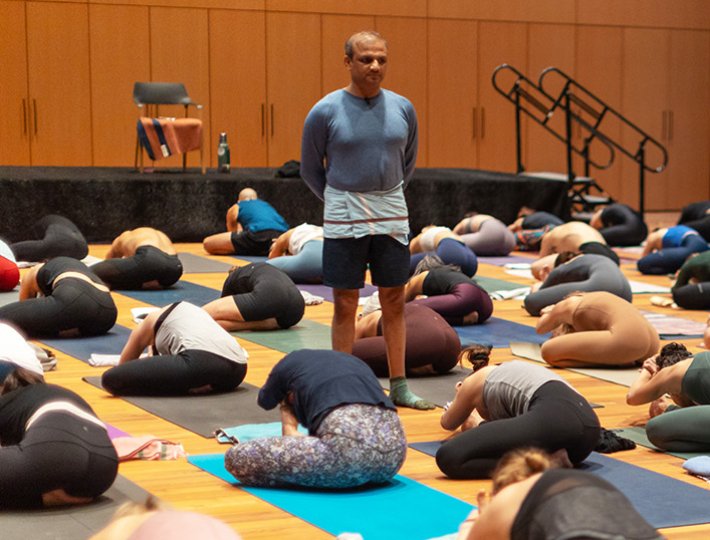Sleep is your best chance to naturally detoxify the nervous and digestive systems and restore balance. Yet many of us wind up staring at the ceiling wide awake when we crawl into bed.
There are a number of reasons why you may be losing sleep, including asthma, allergies, anxiety, depression, chronic pain, and more. While you should seek medical assistance to get to the root of the problem of insomnia, you can also apply three simple approaches, based on Ayurvedic medicine, to help you transition into that very necessary state of body relaxation and rejuvenation. Try one or all of the below and see how they help you optimize your sleep.
1. Clean the Scene
Eat light, not spicy before bedtime. A glass of warm milk and honey with a pinch of nutmeg and turmeric could help ease your body into relaxation mode. One hour before turning in, start dimming the lights in your environment and turn off electronics. Use your bed for sleeping not watching TV or checking e-mails. Take a whiff of lavender oil or use a diffuser in your bedroom to signal your brain that it’s time to shut down.
2. Give Yourself a Foot Massage
Use your fingers to trace a line down from between your second and third toes, one foot at a time, until you are about a third of the way down the foot. Gently rub this point for a minute or two while breathing deeply. Do both soles. For an even richer massage, warm some sesame oil and rub it into the feet, then slip on cotton socks to prevent staining your sheets.
3. Practice “So Hum” breathing.
So hum is a simple relaxing breathing technique that you can do anywhere, anytime for any duration. Don’t think of it as a phrase, but rather a pleasing sound—an easy way to slip into a rhythmic, meditative state. You might say the words “So” on the inhale and “Hum” on the exhale out loud, or silently in your own head in conjunction with your breathing pattern. After some practice you will want to inhale for a long, deep count of six and exhale for a long, deep count of six pausing ever so slightly at the top and bottom of each inhale and exhale.
While this is a simple technique, what it’s doing internally is very complex. It is activating a sophisticated set of impulses, soothing your autonomic nervous system, which controls the fight or flight response. It also engages the parasympathetic nervous system to give you a relaxed sense of well-being, perfect for entry into slumberland.
Related: A Natural Guide to Overcoming Sleep Issues
The short guided meditation below will help you learn so hum breathing so you can relax and slip into dreamland.
By Lisa Hedley










Comments (0)